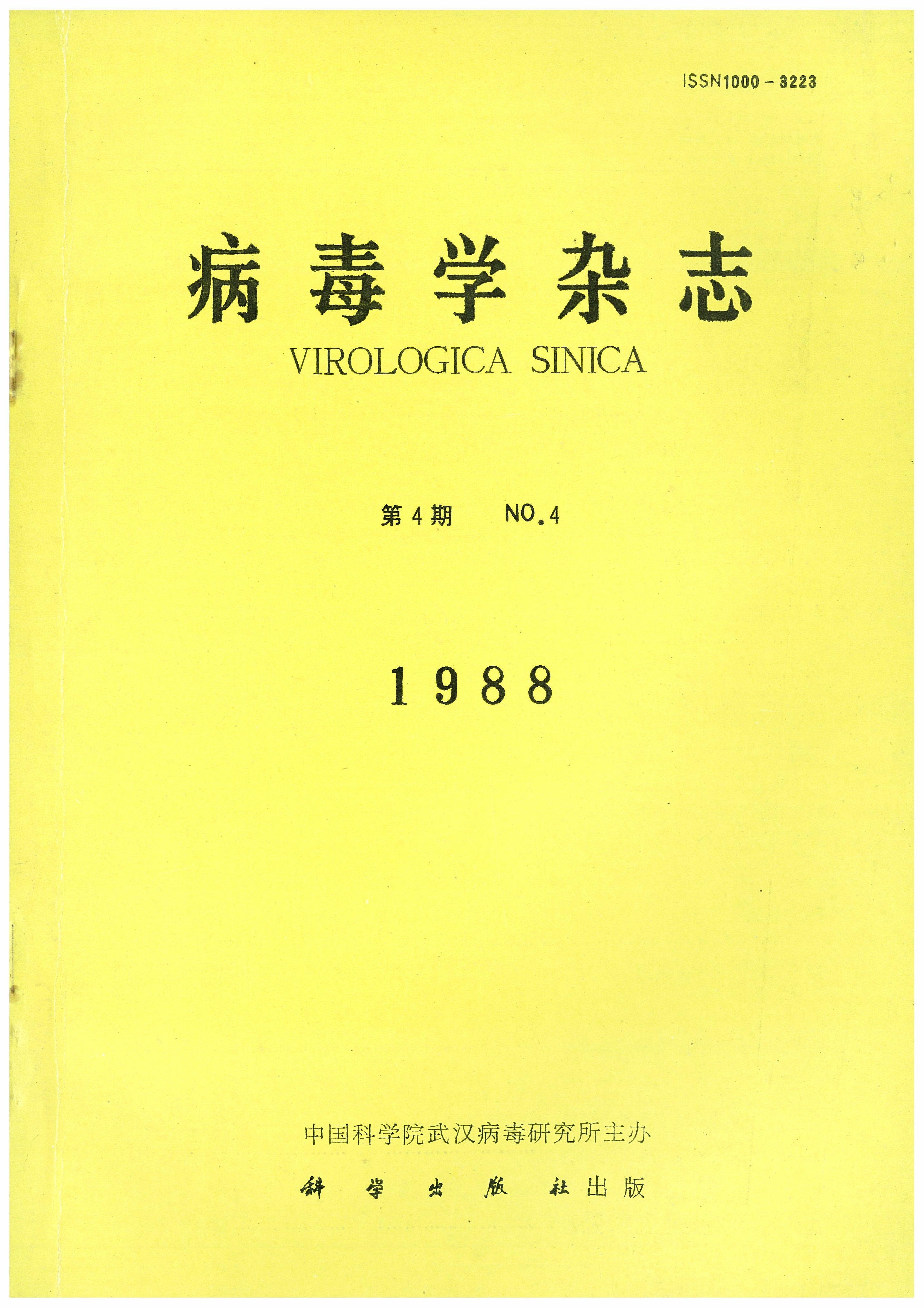Investigation into the role of human eytomegalovirus (HCMV) in the development of AIDS/KS was carried out by nucleic acid hybridization analyses of both human KS biopsy and peripheral blood lymphocyte (PBL) specimens for the presence of HCMV transforming mtrⅡ and mtrⅢ DNA sequences. In one set of experiments, Southern blot analysis revealed the presence of mtrⅡ sequences in only 2 out of 6 KS biopsies, while mtrⅢ sequences were not detected in any of the biopsies. The general absence of both mtrⅡ and Ⅲ tran...
A cloned Hepatitis B virus (HBV) ayw subtype genome DNA has been inserted into EcoRI site of the plasmid pBR322. The 5 end of the inserted fragment, which was confirmed in positive recombinants by molecular hybridization and restriction digestion closes to BamHI site in the plasmid. We have demonstrated that HBV genome inserted into pB322 is able to express antigens of HBV in E. coli HB101 cells.
Detection of the third and fourth components of complement (C3 and C4) and a sequential observation were carried out in 96 epidemic hemorrhagic fever (EHF) patients. Data obtained showed the mean value of C3 and C4 in EHF patients were higher than those of normal controls, while the degree of increase was somewhat different, the increase C4 was especially significant. According to C3 and C4 contents the EHF patients could be divided into 3 groups: C3 level decrease group, C3 or C4 level increase group, C3 o...
In this paper, we have modified the HA and HI test for EHF. EHFVHAN was made by Tween_(80)-ether method as well as by sucrose-acetone method. Higher HA titer of EHFV-HAN was obtained by Tween_(80)-ether method. The pigeon crythrocytc was most sensitive to the EHFV-HAN among 6 sorts of red blood cells. Frozen pigeon crythrocytes have been used instead of fresh goose erythrocytes.
K_(562) cells were challenged with HSV-Ⅱ virus and then cultured for successive reproduetion. In the supernatants of the culture no virus was tested in the 2nd and 3nd generations, but in the 4th generation the virus titer was found to be around 10~3TCD_(50). The culture wes carried on smoothly for 12 generations in 74 days. We observed not only the whole course of the persistent in fecton of HSV-Ⅱ on K _(562) cells, but also the influence of IFN-α,IFN-y and crude interleukin 2 on the persistetn infection. ...
A procedure for obtaining pyrochromatograms of 11 NPV from 6 species insect was described. The differences among the virulanees of same subgroup ould be clearly distinguished through analysis of fingerprinting. There is specificity on both the shape of peak of NPV from 11 strains and peak height ratio. The results of fingerprinting showed that they were distinctive individually. Further it was shown that to analyse NPV with PyGC is feasible.
A new form of indirect enzyme-linked immunosorbent assay (ELISA) has been used for detection of WMV-2 and CMV in watermelon plants. The method uses protein A in two applications to direct ELISA method. The first layer of protein A is a precoating layer for the coating antibody. The second layer of protein A is conjugated enzyme for detecting the second antibody layer. In practical application, Protein A sandwich ELISA (PAS-ELISA) was more sensitive and specific than the direct double antibody sandwich form ...
Using hybridoma techniques, seven hybridoma cell lines: 1H2, 7H1, 10H1, 11H2, 12H3, 17H6, 29H1, secreting monoclonal antibodies to Shanghai Isolate of Ribgrass Mosaic Virus(RMVsh)were prepared by fusion on myeloma cells SP2/O with spleen cells of BALB/c mouse immunized with RMVsh. The subclasses of these monoclonal antibodies were determinated by double antibody sandwich ELISA. 1H2, 7H1 and other monoclonal antibodies belong to IgG_3, IgG_(2b) and IgG_1 subclass, respectively. The ascitic fluids were obtain...
Viroid is small and exists less in host, which is difficult to purify. General method of purification is phenol extract, remove carbohydrate, dialysis, LiCl partition, DNase degradation and cellulose chromatography. The procedure is complicated, recovery ratio is less and the pure sample which is adapted to all kinds of use can t be gotten. A procedure for the separation and preparation of citrus exocortis viroid (CEV)is reported Nucleic acids were extracted from citrus leaves by phenolchloroform treament T...
The reactions of seven monoclonal antibodies specific for Shanghai Isolate of Ribgrass Mosaic Virus (RMVsh) with virion and its coat protein by two different ELISA methods were compared. The results showed that the properties of reaction of some monoclonal antibodies in two different ELISA methods were different. It may be that the antigen structure was effected by the different ELISA methods, so that the capability of the binding of antigen to antibody was changed. The results of determination of seven str...
In the present paper, it is reported that the results of phage adsorption rate constant (ARC) on stationary phasic bacteria, and 50% phages inhibiton (PhI_(50) of LPS μg/ml was estimated, and there is an attempt to analyse the loci and the number of phage receptor sites existed on cell wall of Eschevichia coli. The receptor site of Shigella phage Sh was also estimated and discussed. High ARC (K values 198—515) were derived from 9 strains which lysed by phage E-4(φ369), and the LPS less than 0.125 to 0.5μg/m...
Porcine spleen cells induced with Newcastle disease virus F strain could produce an antiviral substance. The substance was sensitive to trypsin and did not penetrate the dialyser. These indicated that it was characteristic of an Interferon. The antiviral activity of crude porcine spleen cell interferon(PSIFN)was 1.3×10~5u/ml on porket kidney cells. PSIFN production was significantly enhanced by pretreating cells with porcine IFN. The crude PSIFN was less stable to low pH treatment, to 56℃ and to 0.1% SDS. I...

















